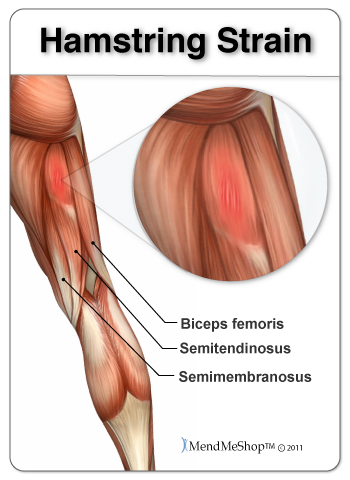
Hamstring injuries are one of the most common injuries in sports, exercise, and recreational activities. There are many reasons that these injuries occur, including: muscle weakness, muscle tightness, pelvic rotation, etc.) As a result, hamstring injuries can also be very difficult to treat and recover from because they can often get re-aggravated. How can you reduce your risk?
In previous articles, we discussed how to improve your flexibility and do a proper warm-up prior to activity. Another way to prevent hamstring injuries is to include “eccentric training” in your routine. Eccentric training is defined as active contraction of a muscle occurring simultaneously with lengthening of the muscle. [1 – Wikipedia] The hamstrings are actively lengthened during both knee extension and hip flexion. And, because a muscle strain injury typically occurs when the muscle is both lengthened and loaded, it would be beneficial to train that muscle at those specific moments. Eccentric exercise can increase strength by improving the hamstring muscle’s ability to produce force at longer muscle lengths. This combined with proper functional mobility, gluteal strength, trunk stability, and proprioception (i.e – body position awareness) is a solid approach to reducing your risk for all types of injuries.
An example of an effective eccentric exercise is the “Box Drop”. Begin by standing on top of a box or step (12-36 inches tall). Then, step off the box and land in an athletic squat position with the hips and knees flexed. Pause and don’t jump out of the bottom position. Use your hands on your knees to push up into standing.
To learn more, contact the team at ProActive Physical Therapy and Sports Medicine!

